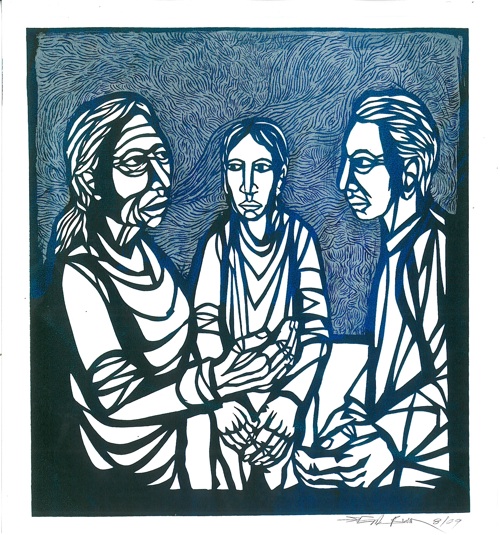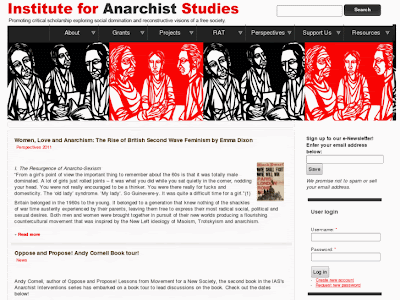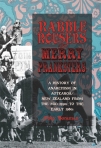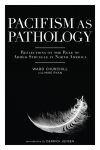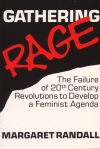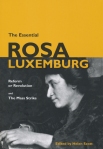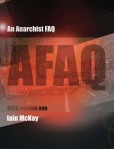My paper for INFO534 (Masters of Information Studies) on two New Zealand Finding Aids.
1. INTRODUCTION
The purpose of archival description is to identify and explain the context and content of archival material in order to promote its accessibility (International Council on Archives, 2000, p.7). Repositories do this through online finding aids: tools that guide the user by establishing intellectual and physical control of the collection. They attempt to illustrate core archival principles such as provenance (keeping records from the same source together and separate from records from different sources), and original order (keeping or describing records in the order they were last used) to enable an understanding of an item’s context—why and how the records were created.
Finding aids vary in structure and functionality depending on:
- Visual design
- Arrangement and description, or system architecture (classic hierarchy or series systems)
- Metadata (standards, data content, and data values)
Using ‘censorship’ as a keyword search, this report considers the usability of two online findings aids—
Tapuhi (Alexander Turnbull Library) and
Archway (Archives New Zealand)—highlighting their visual design, system architecture, and use of metadata. It will also make recommendations for the improvement of usability.
2. TAPUHI
Tapuhi is the online finding aid of unpublished collections at the Alexander Turnbull Library (part of the National Library of New Zealand), whose role is “to collect, preserve and make accessible words, pictures and sounds that tell us about the history and cultures of the people of New Zealand and the Pacific” (ALT, 2011). Tapuhi covers manuscripts and archives, cartoons, posters, ephemera, and photography. However it will soon be replaced by ‘
Beta’—a finding aid that combines all of the National Library’s materials into one database.
2.1. DESIGN
Tapuhi is far from flattering visually, with next-to-no aesthetic design, boring typography and stark white background. But its lack of flair is balanced by the ease of navigation and ‘findability’ such simplicity provides. A basic homepage with the option of searching particular collections successfully invites use, and there are many hyperlinks that explain the process. Within the finding aid hyperlinks are clearly differentiated and metadata is simple to view, eliminating the possibility of confusion or becoming ‘lost’ in the fonds. This simplicity fits the library’s role, ensuring almost anyone could use the finding aid without being visually offended.
2.2. SYSTEM ARCHITECTURE
There are a number of search methods within the user’s chosen collection, providing a variety of entry points (broad search, record title, date, name, iwi, for example). However these entry points are fairly hierarchical compared to a series system and consists of a classically structured database which models the types of relationships found in inventories, all focused on keyword searching. Rather than making archival principles of arrangement and description explicit, the system operates on a Google-like subject search methodology (arguably assuming that users prefer such systems or do not have knowledge of archival principles).
A broad search using the keyword ‘censorship’ resulted in many hits at the group and item level. Once a record is selected, the results can be explored through hyperlinks that lead to the series it belongs to, and further records by the creator (including the entire fonds). In this way the user can navigate quite easily, and get a feel for evidential relationships, provenance, and original order through Tapuhi’s extensive provision of metadata.
2.3. METADATA
Initial results use minimal metadata, showing title, date range, reference number and issue status. But once selected there is a good deal of metadata at the fond, series, and item level. Data content and values at the fonds level is comprehensive and includes:
- Title and date range
- Reference number
- Use information (restrictions, collection and issue status)
- Physical description, linear metres and quantity (folders and volumes)
- Context (arrangement and acquisition information, provenance, record types, general notes)
- Series and child records
- Subject keywords
Much of the data content is hyperlinked—enabling navigation to other records at various levels—and is quite specific, making metadata easy to interpret. At the item level 11 fields use similar as the fonds level values, less the subject keywords and full series links. However, there is no indication of what standard is used—something a number of libraries now make explicit (Wikipedia, 2011)—and it is unknown whether the metadata is reliable.
2.4 SUMMARY
Tapuhi is simple and easy to navigate, but at the expense of multi-directional searching. Its hierarchical and linear system suits a user with basic archival knowledge, items can be located easily, and its metadata gives enough detail to get a sense of arrangement and description. However access to the archive itself is non-existent: there are no links showing how to access or order the found record.
2.5. RECOMMENDATIONS
Thankfully, ‘Beta’ is better—it is well designed visually and has a ‘send an enquiry’ link on each page, allowing greater access to the actual archive. Side columns list various entry points and types of metadata, and a quick search suggests it is an improvement on Tapuhi.
3. ARCHWAY
Archway, the finding aid of Archives New Zealand, is different to Tapuhi in many ways. As New Zealand’s national archive, “many different people and organisations, including family historians, academics, legal researchers, professional historians and genealogists use the materials held at Archives New Zealand” (Archives New Zealand, 2011). Archway takes this diversity of users into account through a number of methods.
3.1. DESIGN
The visual aesthetic of Archway is subdued but thoughtful, simple enough to encourage use but not as stark as Tapuhi. Colour schemes play an important role to signify hyperlinks or retrievable information (gold), access (green, orange or red), and customised options (green). Because Archway can be used in a variety of ways, this design helps ground the user’s experience in what could be a very confusing process. A graph of the various levels of description and at what level the user is on is provided on every page. Key informational links such as ‘Searching In Archway’ are clearly labelled and easy to find.
3.2. SYSTEM
ArchitectureArchway, too, begins with a keyword search. But the options for different entries to records are many, with advanced searches allowing the user to make use of Archway’s series system approach. There are seven levels (or types of descriptions) in Archway that enable full use of the archival principles of provenance and original order. A user can search at the records, series, organisational, functional, or agency level (and more), gaining important contextual information through its architecture and the administrative histories it provides. This process is very well described in the help sections, ensuring users of any level can make use of the finding aid.
How results are viewed can also be customised—as well as deciding on what level to enter, the user can order their results by date range, record title, department, access and location. Once customised, clicking a particular record on censorship then shows two tabs: ‘record information’ gives information on description, accession, and controlling agency—each hyperlinked to further information—and ‘ordering information’ gives reference numbers, access information and the option of ordering the record then and there.
3.3. METADATA
Archway uses metadata in different ways to Tapuhi. While title, date range, reference numbers, record type, accession and agency are provided on most records, they are not listed in a simple format. Apart from the title and date range, there is no metadata around the subject or content of a particular record. Instead, metadata content leads to more content through hyperlinks, especially at the series level, where broader context such as administrative histories and provenance is provided. In this way the metadata is more complex than Tapuhi and could effect ‘findability’, but the time needed to locate information drives home archival principles of arrangement and description—providing a wealth of contextual knowledge only implied in Tapuhi.
The data in Archway also serves another function—continued archival practice based on the continuum model. To do this Archway implements the Australian Series System and its related standards of metadata. This information, and information on the reliability of the content, is readily accessible to the user; for example, Archway points out that “the quality and completeness of this information does vary, and work is underway to bring it up to a consistent standard” (Archway, 2008).
3.4. SUMMARY
Archway is a complex and complete finding aid well suited to that of a National Archive. It balances the needs of a novice user with the competent researcher, and aids current archival practice for its host organization. Its series system fits archival arrangement and description, offering various points of entry and contextual information for the user.
3.5. RECOMMEDATIONS
Archway could be improved through the use of video and Web 2.0 technology. Video is a growing Internet tool with many organizations benefiting from its inclusion into their websites. It would allow the user to get a handle on Archway’s series approach and core archival principles, and provide richer search results. Web 2.0 would also allow users to see the comments and research trails of past users, and the use of tags could increase metadata and aid searching by subject.
4. CONCLUSION
The finding aids of two New Zealand repositories illustrate how differences in visual design, system architecture, and the use of metadata, produce a different experience for the user. While Tapuhi is simple and easy to use, it is restricted to classical arrangement and description and, despite ‘findability’, it is still hard to access the physical record. Archway, on the other hand, uses a series system that, despite the possibility of creating confusion, allows a wide range of users to partake in broad and context-rich searches. It is aware of its arrangement and description systems and the use of metadata standards, and suits the scope of a National archive. However both could still be improved, to the benefit of all users.
REFERENCES
International Council on Archives. (2000). ISAD(G): General International Standard Archival Description, Second Edition, Ottawa.
Alexander Turnbull Library. (2011). About Us. Accessed 25 October 2011 from http://www.natlib.govt.nz/about-us/role-vision/the-role-of-the-alexander-turnbull-library
Metadata. (2011, September 20). In Wikipedia, The Free Encyclopedia. Accessed 25 October 2011 from http://en.wikipedia.org/w/index.php?title=Metadata&oldid=451465198
Archives New Zealand. (2011). About Us. Accessed 28 October 2011 from http://archives.govt.nz/about.
Archway. (2008). About Archway. Accessed 28 October from http://www.archway.archives.govt.nz/AboutArchway.do.

